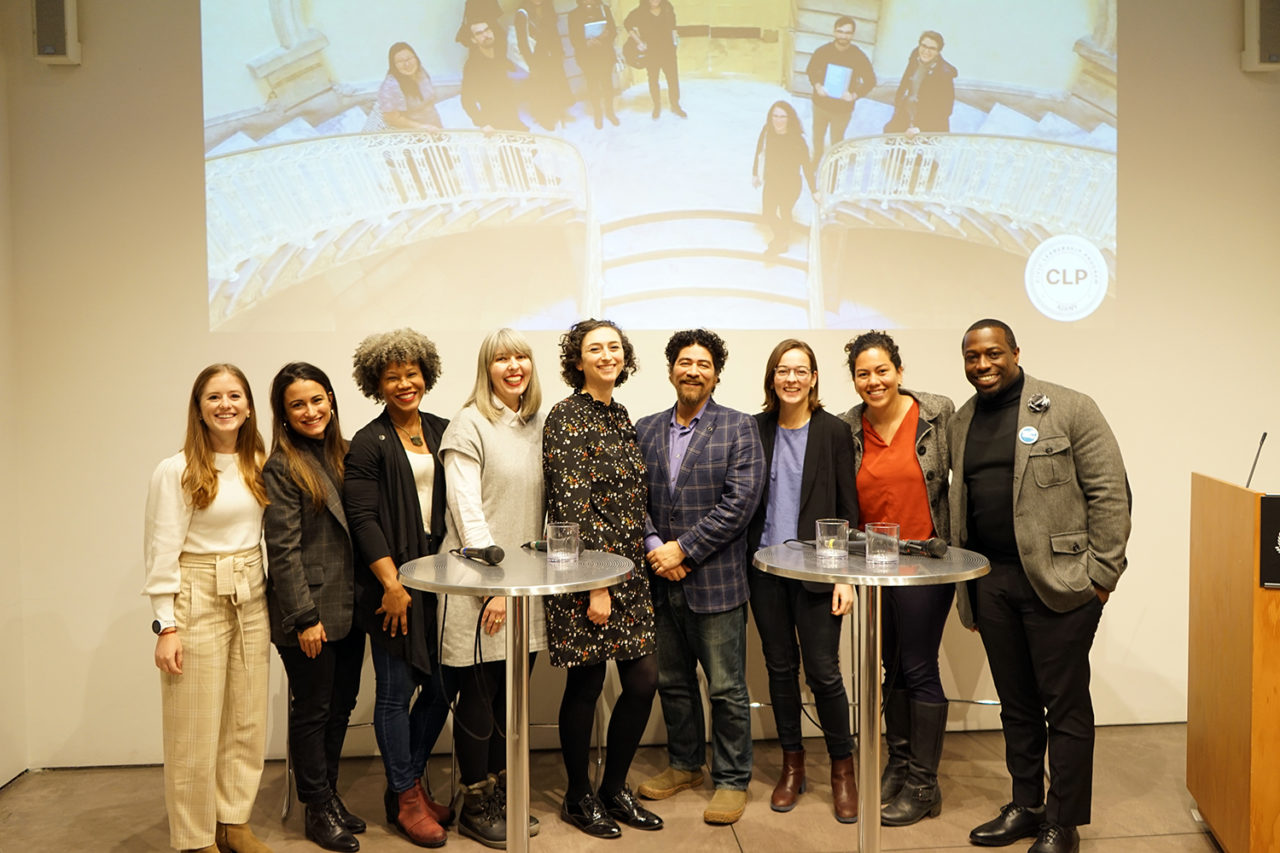by: Ane Gonzalez Lara, Athena Unroe, Delma Palma, Kenneth Nelson, and Leanne Zick
The final AIANY Civic Leadership Program (CLP) event for 2019, Agency: An Architect’s Tools for Civic Engagement, was held on December 3 at the Center for Architecture in an effort to empower architects to have a more proactive civic role. The discussion served as the culmination of the year’s six-month-long CLP, during which 10 emerging architects cultivated their advocacy skills.
The discussion took lessons from fields beyond architecture, looking to behavioral science, graphic visualization, public engagement, and real-estate development for how to hone individual and collective skills in fostering community trust and participation.
The CLP fellows started the night by acknowledging that traditional modes of architectural education and practice do not adequately prepare practitioners to advocate for social issues. The audience was encouraged to believe that as professionals, and as New Yorkers, there are many opportunities to be civically engaged. Each presentation was then framed as a tool that could be used to catalyze civic work: research, outreach, communication, and action.
RESEARCH – Anthony Barrows, a behavioral scientist and managing director at Ideas 42, started off the night by focusing on research. Barrows discussed how investigation is critical to understanding how changing the physical environment can affect human behavior.
OUTREACH – Christine Gaspar, the Executive Director at the Center for Urban Pedagogy (CUP), presented on the power of design and art to increase meaningful civic engagement, particularly among historically under-represented communities. Gaspar explained how CUP partners with designers and community organizations to create visually-based educational tools that help demystify complex social justice issues impacting their communities, such as zoning laws to immigrants’ rights.
COMMUNICATION – Inbar Kishoni, Urban Planner and Director of Public Engagement at the Department of Transportation (DOT), spoke about the multi-lingual outreach specialist team she leads, which has become integral to the way the agency communicates about and builds support for projects.
ACTION – Majora Carter, an urban revitalization strategist and developer, finished the presentations by describing her insights on real estate and economic development, based on the belief that It was based on talent retention is key to building better neighborhoods. By placing higher-quality gathering spaces and commercial amenities in neighborhoods where the market may not be yet, Carter believes neighborhoods will retain people who might otherwise leave. She emphasized the importance of educating neighborhoods about their own self-worth in order to protect the financial and social capital.
While the speakers came from different fields and offered diverse perspectives, all of them reiterated a few critical points:
The importance of understanding context: This refers to both the physical and social context of a community. It is important to understand how the built environment has had an impact on a community. For example, lower income neighborhoods have fewer grocery stores and access to fresh food, leading to health issues. All of the speakers discussed how redlining, structural racism, and confirmation bias have shaped the physical environment in negative ways.
Speakers also referenced how many neighborhoods have undergone multiple planning efforts and may be experiencing “engagement fatigue” from providing feedback on several occasions without seeing direct results. There is also a history, and potential conflicts, that an outside designer may not immediately be aware of. Acknowledging this context before starting to design “solutions” is imperative to developing a design that reflects the priorities of the communities we serve.
The need to listen to the real experts: Designers must humbly acknowledge that they do not have the answers to complex social problems. What we can offer is design as a tool, shaping the built environment to have a positive impact. Designers must recognize that the users of a space are the experts of their lived experience in order to work with users to make the project more successful.
The impact of our environment on social justice issues: A key phrase of the night was how “design is power” and as designers we choose where and with whom to place that power. Our landscape deeply affects our perception of what we can expect from the world. If the world has told you to expect blight and neglect in the built environment, how can you come to think you deserve anything else? As designers, we have a skill set that gives us the opportunity to work with communities to translate their visions into reality. Communities often have the solutions to the issue they see in their neighborhoods and just need increased advocacy that can come from the visualization of an idea through design.
Overall, the sharing of personal narratives throughout the night was impactful. Speakers discussed how they lived through particular issues they now attempt to address in their work: the foster care system, disinvestment in low-income neighborhoods, the difficult immigrant experience. Architects do not typically discuss their personal lives at the Center for Architecture, so this unique sense of trust in sharing private histories revealed just how deeply embedded issues of social justice are in their inspiring work.
Personal narratives enrich the work we do and, by helping us understand our own motives as designers and how that relates to our stories, allow us to develop our own agency in contributing to civic engagement, to ultimately help others in turn. This event was a reminder that each of us should find our own individual means of incrementally adding to a more civically engaged field of architecture.









